Robotic Car Research Platform
Summary
Researchers at the Center for Intelligent Systems, Control, and Robotics (CISCOR) at Florida State University were interested in developing mid-jump attitude control of car-like vehicles, actuated by applying torques to the wheels during flight. One of my earliest research projects focused on developing a hardware platform to enable this research.
Goal
Design and implement design modifications for a high-quality RC car for the purpose of enabling autonomous vehicle control.
Approach
An inexpensive way to create a car-like robotic platform is to modify a remote-controlled car. After a suitable, high-quality RC car had been selected and purchased, I started the modification work by constructing CAD models of the drivetrain; specifically, the front and rear axles and bearing blocks. The first objective was to figure out a way to mount optical rotary encoders on all of the wheels to measure their angular velocity.
I wanted to use as many of the original manufacturer’s components as possible in the final design, as these components are easy to replace if damaged, and many of them have undergone hardening treatments in order to handle the stresses of repeated shock loads.
For the front tires, I opted for designing an encoder mount component that hugged the existing shaft bearing block and steering arm. The modifications do slightly increase the axle track, but negligibly so; I was able to use the original manufacturer’s half shaft, passing it through the encoder mount to mate with the wheel. Since this component would not be exposed to much stress, it could be machined from aluminum and anchored to the steering arm with a single screw.
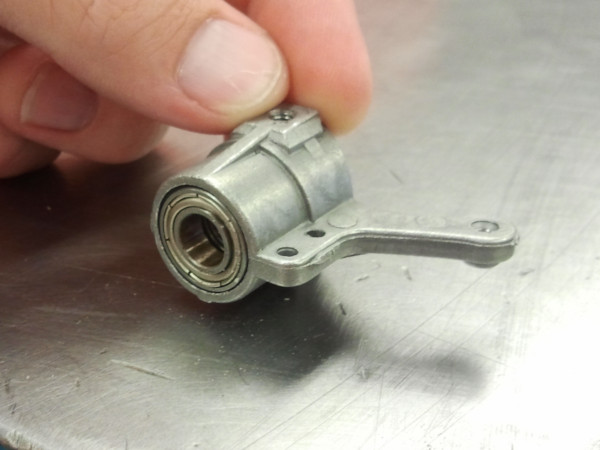
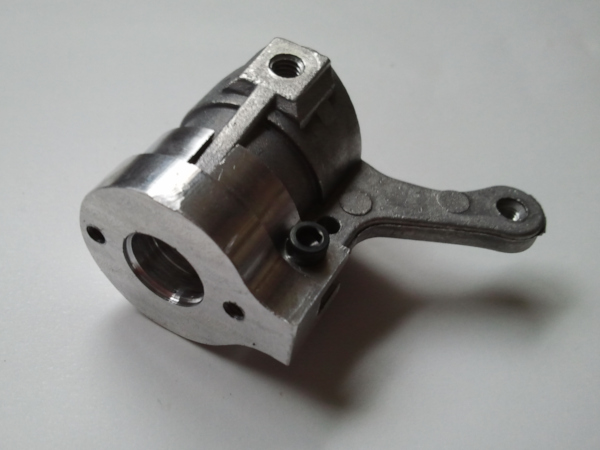
The addition of some custom collar shafts and a few mounting screws completed the encoder work for the front drivetrain.
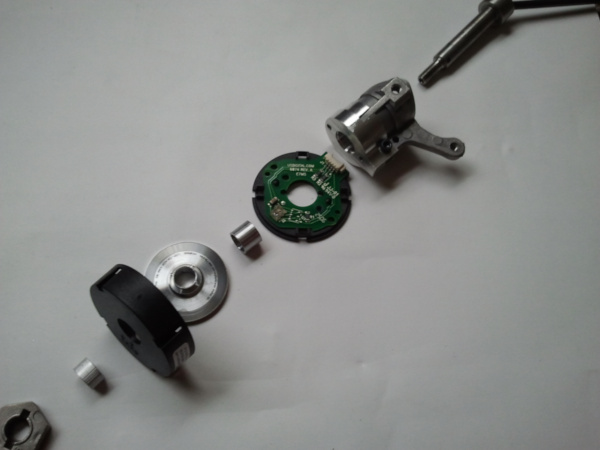
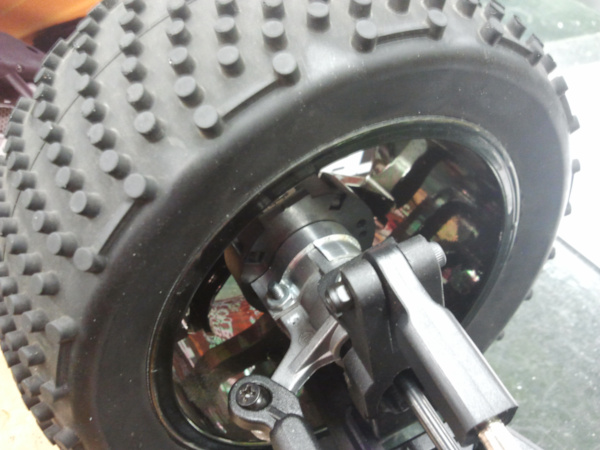
The rear drivetrain geometry is much simpler; the plastic bearing blocks for the rear shafts were completely redesigned and fabricated using aluminum.
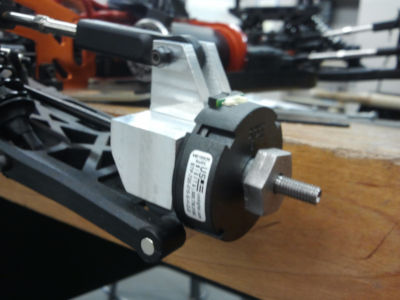
Output from the wireless receiver, which receives commands from the wireless remote, communicates with the steering servo and motor controllers using pulse-width-modulated signals, which are easily reproduced by the microcontroller. The microcontroller talks directly to the receiver so that the vehicle can be switched between remote and autonomous modes.
Finally, a mounting plate was designed to provide a safe location for the microcontroller and IMU.
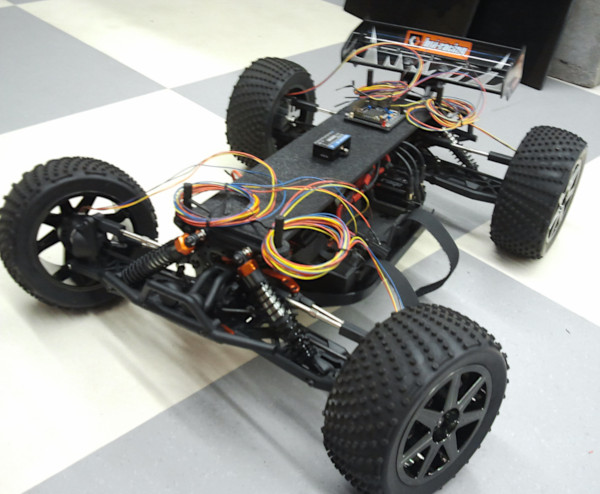
The plate was designed to hold the components and still allow the exterior body to protect the vehicle internals.
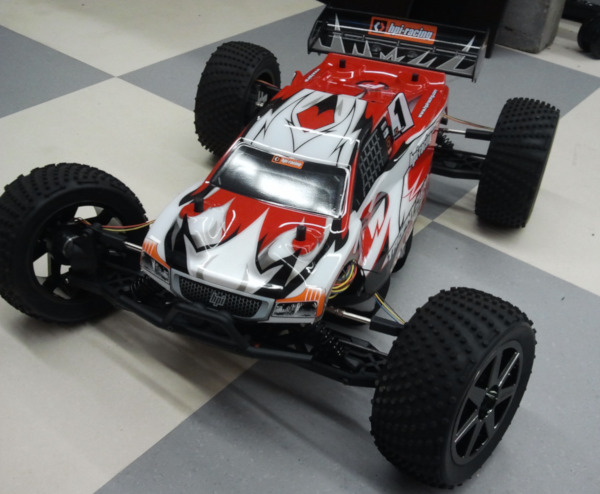
The platform was then ready for the development of a mathematical model around which a controller could be designed!